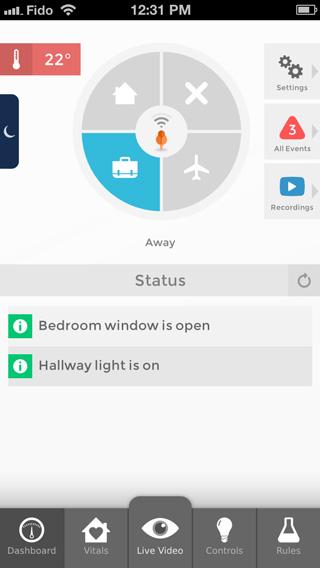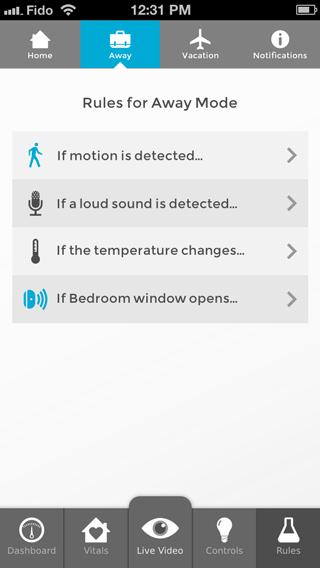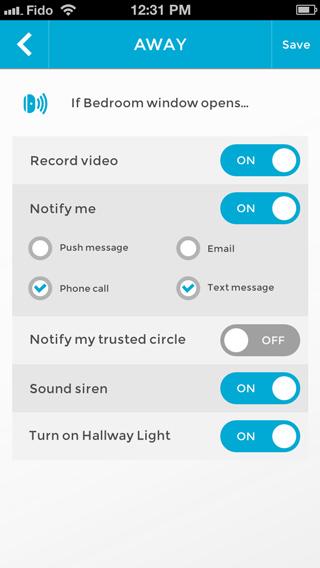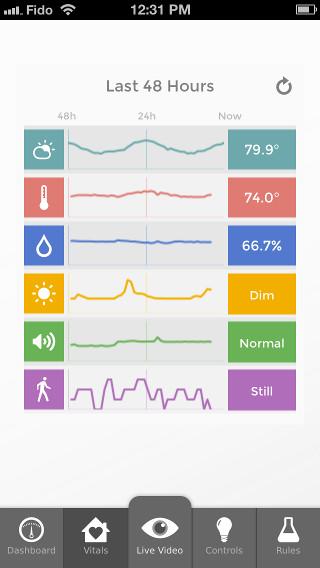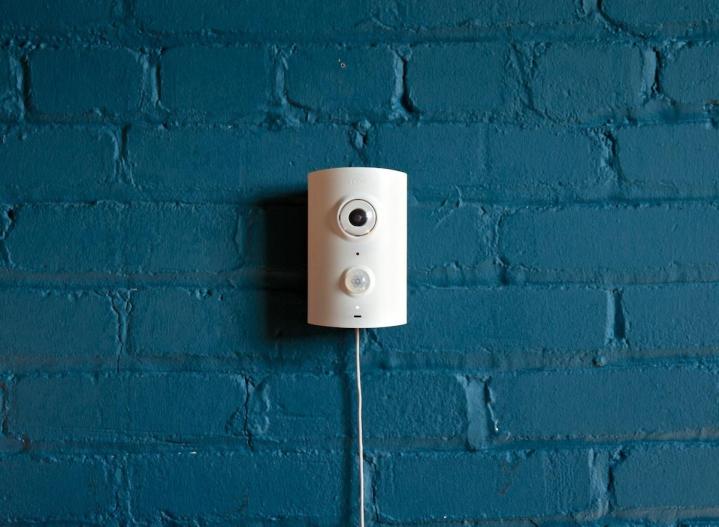
If you’ve been following up with our recently-rebranded Living section, you might notice that the “Internet of Things” are all the rage … well, at least on Kickstarter. Plenty of Web-connected appliances – from light bulbs to stoves – are trying to make their ways into your homes, that is if they can get enough money to make that dream a reality. Although it can be hard to sort through the plethora of new items each week, Piper smart home security system wants to stand out from the crowd. That’s because unlike most companies that have a basic prototype of the device, Piper is real live product that’s ready to ship as soon as November. We were invited to test the device in a remote demo session, hooking our New York-based iPhone 4S with the developer’s Ottawa-based Piper. Here’s how it went.
What is it?

The key to Piper’s functionality is its integration with Z-Wave-based home automation system. Z-Wave is a series of wireless communication protocols designed to help you customize home automation. For example, you can install a Z-Wave motion sensor on the door and it will recognize when the door is swung open and closed. You can also hook a Z-Wave device on anything that’s powered by an on/off button and it will realize when the device turns on. All this information is centralized back to Piper, so everything that happens in your home is reported back to one source: Your smartphone.
The Piper can be mounted on a wall or placed on tabletops with a stand. It connects to a power outlet, but also has a slot for AA batteries in case of power outages. If it loses connection to your home’s Wi-Fi network while power is out, it will continue to record videos and respond to your preset commands. Once your Internet connection is back up, it will report whatever you missed while Wi-Fi was down back to your smartphone.
How it works
Upon launching the Piper app, you’ll see four security modes at the home screen: Home, Away (Work), Vacation, or Off. These settings allow you to specify different commands for the different times you’re in and out of your house. For example, if you are home, you could set the Piper to alert you if it detects motion downstairs in the middle of the night. If you are at work and suddenly the front door opens, it can also send you a notification – be it by text, phone call, email to you and/or your trusted circles. Piper’s camera continuously records your home much like a webcam, saving clips in loops within Piper’s local flash storage. If an alarm is triggered, the firmware will send the recorded the video segment, including five seconds before the event, straight to your phone.
With Z-Wave, you can set various rules according to the power going on or off and motion recognition. This gives users the flexibility to program alerts when windows randomly open, or if the light comes on when no one’s around. Piper’s built-in motion sensor can also distinguish between an intruder and a pet, using a heat signature-based system to detect the difference between a full-sized human and a small dog. So, when Fido’s just running to the door to greet the mailman, no alarm; when the mailman breaks in, alarm.
You can connect 232 Z-Wave sensors and devices to one Piper, which goes a long way to providing remote monitoring of a small home or apartment. For those who are primarily interested in the Piper as a security camera, they would need multiple units to cover multiple rooms.
The environmental sensors provide another layer of functionality for data-hoarder types. In the app’s Vitals tab, you can see line graphs of various environmental changes over the past 48 hours, including noise, indoor and outdoor temperature, and humidity levels. Nothing groundbreaking here, but cool if you like watching for patterns and seeing how you can adjust your thermostat to save the bill, or lower the noise around the house to keep neighbors happy.
How well does it work?

In our testing with Piper’s Toronto-based prototype, we were able to use its live camera to watch as the Piper crew talked to us from their conference room. You can drag the camera around to see various angles of the room, or pinch to zoom closer. Although the Piper is close to final production, the team is still working on additional features, such as multi-room control for multiple Pipers and better video quality. From what we could see in our iPhone 4S, the quality is good enough to check when something unusual happens in your home. It’s not an HD security camera that’s powerful enough to facially recognize thieves by any means, but it’s close.
In the motion recognition test, the team opened the door while we had Piper set on Away mode. Within seconds of recognizing that the door swung opened, Piper was able to send us an alert to let us know what happened. According to the company, the sensor can detect up to 20 feet away. These events are also logged in the Events tab on the home screen if you need to refer back to the date and time it happened. If you set the Piper to record a video when such an event happens, you can refer to the Recordings tab as well. The Piper team estimates that the cloud can hold up to a few weeks’ worth of videos, which should be enough to last an average household – assuming they’re not the Baudelaire siblings from A Series of Unfortunate Events.
Unlike blaring fire alarms or annoying ADT beeps, the push notifications come just like you would receive breaking news alerts or text messages. This makes keeping track of your home less intimidating, since these alerts we perceive to be normal won’t instill the fear that usually comes when a fire alarm starts wailing.
While Piper boasts temperature detection and motion recognition for small pets versus human intruders, we were not able to test these features during the demo, therefore we cannot vouch for how well they function.
What’s next?
At the bare minimum, Piper is already a strong smart home security contender in a sea of Kickstarter darlings. Unlike the Canary, a similar smart home security device, Piper’s Z-Wave integration, pet distinction sensors, and noise recognition makes it stand out from its competitors. It’s got also sleek software that’s easy to use for even the most tech-illiterate consumer.
While there are no monthly fees to use Piper, the company aims to launch a cellular-enabled version soon. With this addition, if a power outage occurs, Piper can stay online as long as phone signals are available. As Piper becomes smarter and can use the Internet to its advantage, it can also begin aggregating local data to further automate your home. This means recognizing when the sun sets to put the lights on, or turning the air conditioning on when indoor temperature gets past a certain point. A weatherproof, outdoor version of Piper is also in the works.
Overall, we were impressed with Piper and the features it offers for under $300. You could spend almost the same amount for a bunch of Internet-connected disco lights, but the Piper would be a more valuable investment. While it won’t replace a complete home security system, Piper’s portability makes it ideal for renters and city dwellers to keep tabs on their small spaces in case of emergencies. And it looks darn good doing it.
Piper is currently available for pre-order in Indiegogo for $210 for a North American Wi-Fi version, and is available in black or white. The device will ship in November of this year, and the app will be compatible with both iOS and Android.
Editors' Recommendations
- Arlo Pro 5S vs. Ring Stick Up Cam Pro: Which is the best premium security camera?
- Ring Pan-Tilt Indoor Cam vs. Ring Stick Up Cam Pro: Which is better for your home?
- Roku (yes, Roku) make a home security camera, and it’s discounted today
- Blink Mini 2 vs. Ring Stick Up Cam Pro: Which is the best security camera?
- How to format the microSD card on Tapo security cameras
